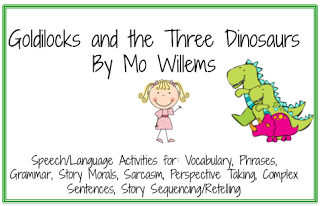Language Disorders in Children Adopted Internationally
As an adoptive mom of two children born in Korea, and as a Speech Pathologist, this has been a topic I’ve talked to parents about often. I am glad that all my thoughts and advice are being validated by research!
Last year I received a phone call from a very anxious new mom. Her seven year old daughter was about to start school for the first time in the girl’s life. The child had been adopted from an orphanage in Eastern Europe several months before and was supposedly severely developmentally delayed with multiple medical diagnoses.
We began Special Education testing with the child immediately, however, we found that she was very difficult to test due to her complex history. She had been raised in her birth country with two languages in a very non-stimulating home and then orphanage. She was no longer exposed to either of these languages but had been learning English for only a few months. She had forgotten some of her first languages. She had never been exposed to books, letters, numbers, or developmentally appropriate toys before her adoption.
There are NO standardized tests for this student. How did we test her?
We tested her both in English and one of her native languages to get some baseline information. We did a lot of receptive and conversational language samples. And we relied heavily on her medical diagnoses.
Although she remained behind her peers, she made significant progress in the year that I worked with her. At the beginning of the year she did not know her letters or sounds, at the end of the year she was close to benchmark for her grade level. Alas, she changed schools after that and I do not know how she is doing now.
The following information is summarized from “Speech and Language ‘Mythbusters’ for Internationally Adopted Children” by Sharon Glennen, PhD.
1. Most children adopted internationally quickly learn English. Within one year, children adopted before 2 years of age score within the average range on English expressive and receptive language tests (when compared to peers raised in English only speaking homes). Children adopted at ages 3-4 score within the average range for comprehension within a year, but may need up to two years for expressive language to catch up to their peers.
2. Most children raised in orphanages will not have lifelong language disorders . Environmental and nutritional care play a role in neuro-potential. Some children, however, are more resilient and make rapid progress when they arrive into their permanent homes. The incidence of language disorders in children who are adopted by age 2 is 22% (higher than 2-8% in the general population). Most, however, test within the normal range within one year of being home due to rapid progress.
3. Children adopted internationally are not the same as English Language Learners (ELL). Unless the adoptive parents’ home language is the same as the child’s birth language, the child cannot be lumped into the ELL group at school without special considerations. Unlike an ELL student, the child who was adopted internationally is thrown into a new language 24 hours a day. There is no “break” at home from the inundation of foreign language. There is no processing time or explanations within their first language. These children are in a full-immersion situation, and often start regressing in their first language.
4. Newly arrived children should be assessed based on guidelines for children in their unique situation. They can be tested for social communication, gestures, vocabulizations, and play soon after entering their new homes. If the child is not comprehending English well within the first 12 months, they should receive a full language evaluation in English.
5. Some (I would argue most) Speech-Language Pathologists are unaware of research on children adopted internationally and language disorders. The author’s research showed that 54%-68% of these children were referred for assessments and 35%-50% received treatment, even though only 22% actually had a disorder. The assessment team must be careful to provide services only to those who need them. The amount of time in the country and age at adoption are very important factors in making diagnoses and treatment decisions.
I hope this information is helpful to you, or you can pass it along to an adoptive family. It would have been helpful if I had known about this research when we first began our adoption journey.







Excellent! Excellent! Excellent! This is why I always recommend your blog on adoption list-servs when someone asks a speech question. 🙂
Popped over from Lisa’s blog…your blog is truly lovely! Can’t wait to read more…gotta go pick up #1 from school though 🙂 I’ll be back 🙂
What great information. I found your site through Lisa, very busy mom with four. She was braggin’ on you the other day and I thought I should check you out. Sure glad I did, thanks for the encouragement.
What a great source of information!!
See you soon – Kellan
Wow…very interesting. It always amazes me how adaptive children are are learning new languages.
I can’t tell you how much I appreciate this post.
Hubby and I are talking about adopting a child (an older one) in a few years… and so I love reading anything I can on the subject.
I adore your blog. I can’t say that enough.
Boris Gindis, Ph.D. has written about this regarding children adopted from Russia. He has a web site at http://www.bgcenter.com. Thanks for blogging — love your site.
I was just reading this article in ASHA – great job posting it